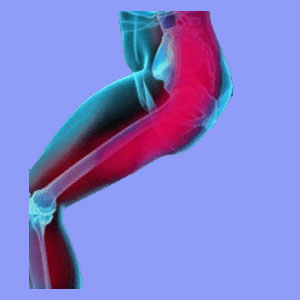
High heels sciatica is a very real consequence suffered by many women who regularly wear shoes with a significant sized heel. Placing fashion over anatomical form always has risks, but when it comes to high heels, medical science has long known that these types of shoes have greatly detrimental health consequences, especially when worn often. In fact, daily wearing of high heels can actually negatively reshape the spine over time, leading to permanent damage in some instances.
High heels are a great love for many women. Some female patients are more upset at the advice to stop wearing high heels than they are over their actual pain. We understand that some patients really love their fashionable shoes, but we have no choice but to share the honest facts describing how sciatica can be exacerbated or even directly caused by high heels.
This patient guide provides an objective look at how shoes with high heels change the spinal anatomy and influence the sciatic nerve. We will also provide some sensible guidance on avoiding back pain and sciatica when wearing shoe with a heel.
High Heels Sciatica Mechanisms
The foot is designed to be at an approximate right angle to the ankle when standing. This is the natural design of our anatomy and the most efficient position for walking and any athletic endeavor. Additionally, weight is designed to be distributed on the foot, with our body mass and all the stresses associated with movement spread across the bottom of the foot, including the toes, ball of the foot, sides of the foot and heel. This distribution of weight and stress improves our balance and minimizes the negative effects of impact and fatigue. Finally, the spine is also designed to work best when the feet are on the ground at a right angle to the leg.
High heels completely change our posture and diminish our physical ability for very good reasons. First, all of the body weight is transferred to the ball of the foot and possibly, the toes, which are also often cramped into a pointy shoe end that increases the pressure and stress of this position, often inciting calluses, bunions and other problematic conditions. Since weight and stress are no longer distributed evenly, any impact or fatigue will have exponential effects that will quickly affect the feet and spread up the leg.
The change in angle of the foot to the leg is a crucial consideration, since it changes the tension of the hamstrings and these muscles tie directly in to the lower back anatomy. The change in foot angle also tilts the pelvis, since the body must compensate in order to balance itself. In order to compensate for the foot posture presented by a high heeled shoe, the lower back will need to curve more than usual (hyperlordotic posture) in order to adjust to a change in balance. All of these changes can put pressure on spinal nerve roots or might enact compression of the fully formed sciatic nerve by the piriformis muscle, which also tightens in response to high heels. Either one of these scenarios is possible when structural conditions already narrow the central spinal canal, decrease the patency of the foraminal spaces or dispose the person towards piriformis syndrome, either due to injury, imbalance, anatomical abnormality or RSI in the piriformis structure.
Will Wearing Heels Cause Sciatica Symptoms?
Sciatica that occurs from the wearing of high heels can mirror any other type of sciatic nerve pain syndromes, which means the symptoms may be very case-specific. Some women will suffer primary pain in the feet, while others might endure most of their pain in the calf muscle. Many women will suffer the classic shooting pain down the back or outer side of one or both legs, while other women may experience severe lower back and/or buttocks pain.
Some women do not have any pain, but have alternate symptoms, such as tingling, numbness, weakness or atypical fatigue in the legs or feet. Sometimes these symptoms are present in addition to pain, but many times, they are precursors to pain that is just around the corner if women continue to wear these shoes on a daily basis.
In rare cases, women might suffer frontal pelvic pain or pelvic floor dysfunction from continued wearing of high heels in association with tilted pelvis and subsequent postural changes. Urinary leaking and slight incontinence is another possible symptom. The possibility of these symptoms being sourced by high heels is rarely brought up during diagnostic evaluation, so we mention it here for women who find themselves in bad situations suffering form idiopathic pelvic or urinary incontinence issues.
High Heels Sciatica Treatment Tips
We have mixed feelings on this topic, since it is proven that the anatomy has wonderful abilities to adapt and compensate for all manner of structural abnormalities and postural changes. Our bodies can acclimate to the wearing of high heels and will certainly be able to minimize the negative effects in many cases. However, this is not the say that this process of adaptation is not stressful or that it can be maintained forever. This is why so many women reach a stage of life where high heels become a real torture, even though they wore them often and without major problems earlier in life.
It is also worth mentioning that many women gain weight as they get older and this increased mass exponentially increases the additional stress of high heeled shoes. We cover some of the reasons why weight gain is detrimental to sciatica in our essay detailing the effects of obesity. Additionally, women who have experienced child birth might demonstrate weakened pelvic and bladder control musculature. These women are certainly more susceptible to the above examples of pelvic and urinary symptomology.
Therefore, our guidance for women who are suffering sciatica due to their choice of shoes is to maintain a healthy height-proportionate weight, stay in great shape to build muscular strength in the pelvis, legs and feet and minimize the hours spent wearing high heels, if they are problematic. Try to wear flats for most of the day and change to heels only when they are truly needed. Some women find platform shoes to be a good option, as these do reduce some of the collateral postural changes associated with a low frontal section of the shoe in relation to a very high rear heel. Even wearing a thicker heel shoe might help some women who are just beginning to suffer the ill effects of regular high heel use, but this change probably will not prevent the condition from progressing, so caution is still advised.





